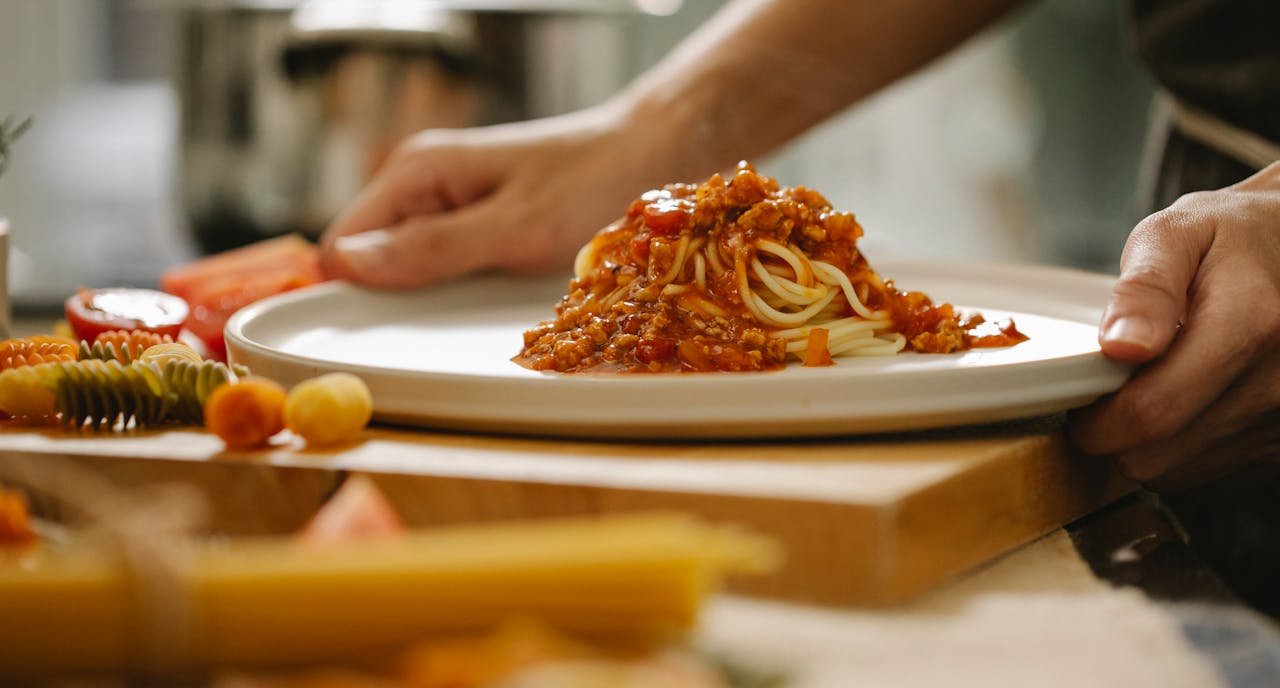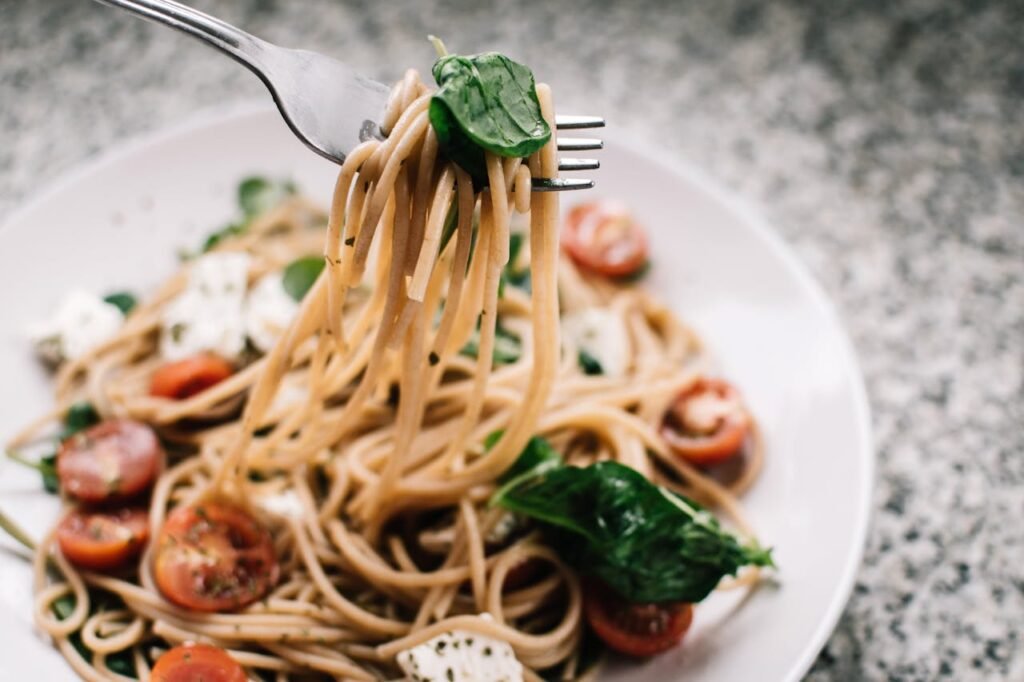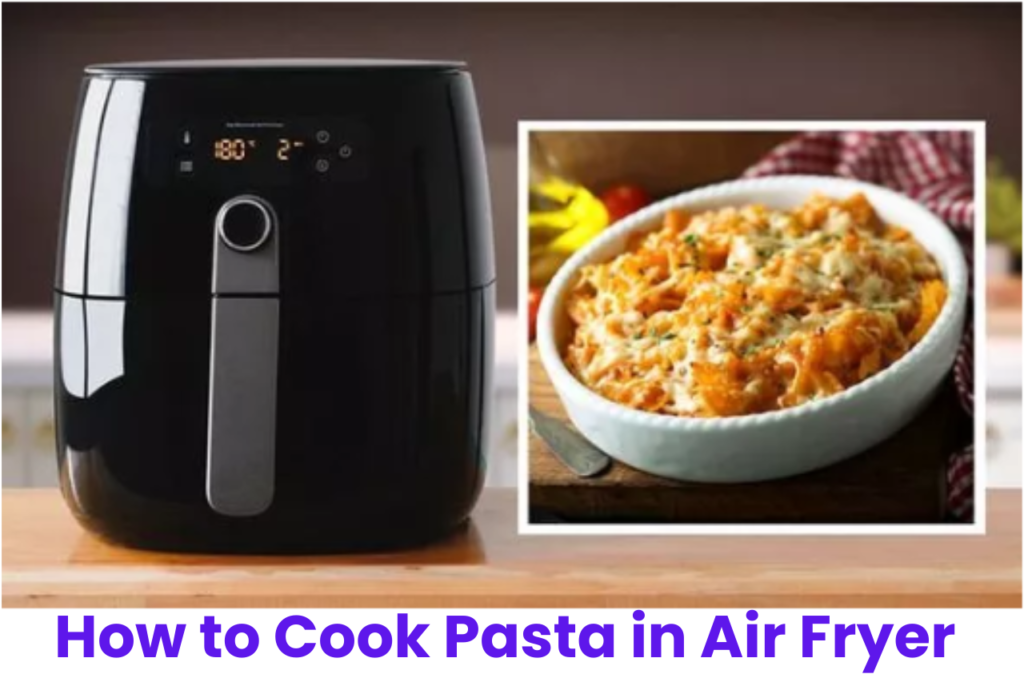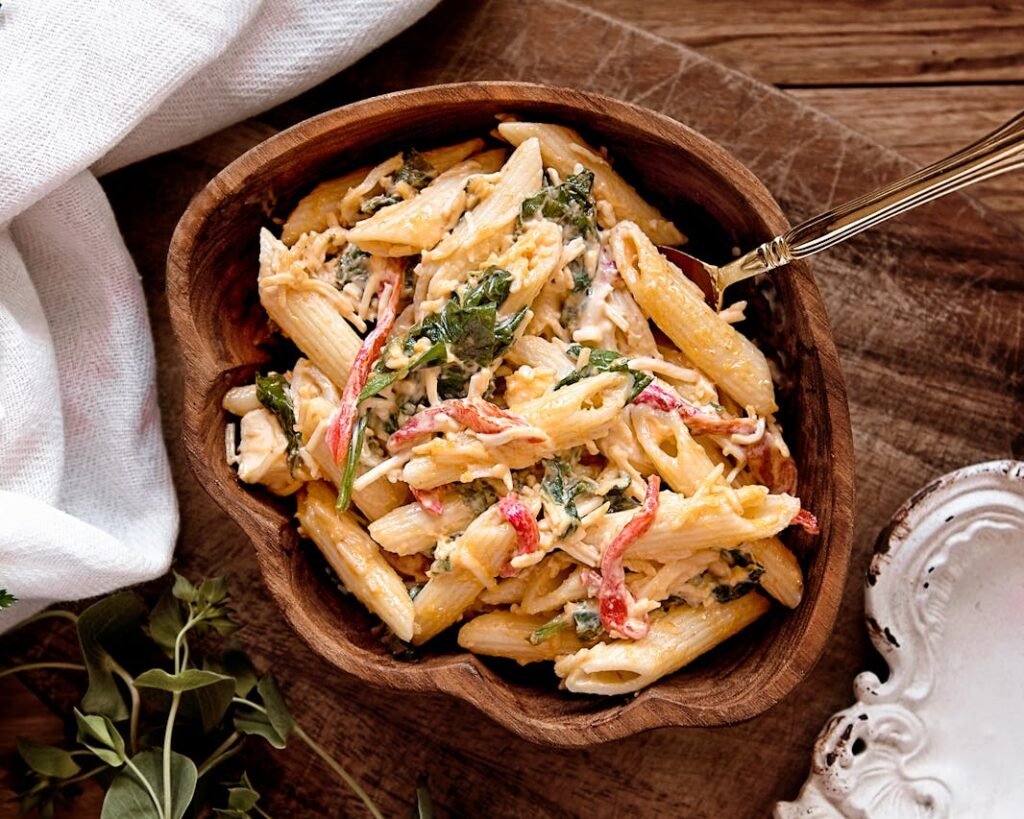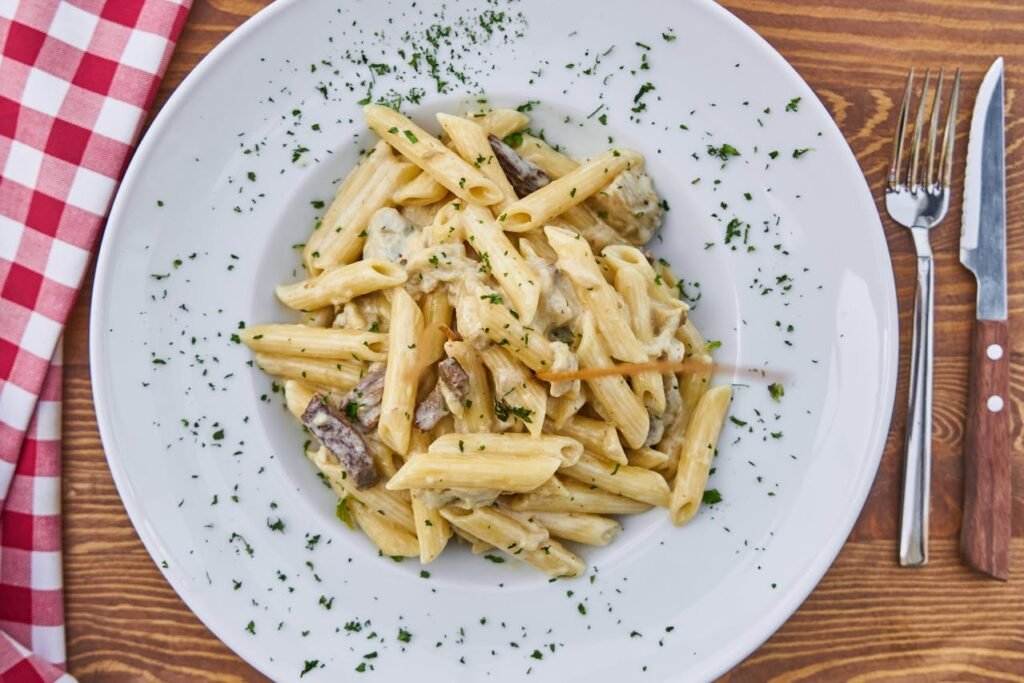In the rushing about of present day life, setting up a natively constructed pasta sauce without any preparation can appear to be overwhelming and tedious. That’s where jarred pasta sauce comes to the rescue. With a jar of value sauce close by, you can prepare a delightful dinner in minutes, making it a definitive comfort nourishment for occupied people and families. In this article I will guide you how to cook pasta sauce from a jar.
Jarred pasta sauces offer a variety of flavors and styles, from classic marinara to creamy Alfredo and zesty pesto. They are promptly accessible in grocery stores and proved to be useful when you want to assemble a fast and fulfilling supper without settling on taste.
This article will direct you through the method involved with cooking pasta sauce from a jar, giving tips on choosing the right sauce, improving its flavor, and making delightful pasta dishes. Whether you’re a novice cook looking for simplicity or a seasoned chef seeking convenience, cooking with jarred pasta sauce opens up a world of culinary possibilities.
Choosing the Right Jarred Sauce
Selecting the perfect jarred pasta sauce is essential for creating a delicious meal. With such countless choices accessible, it’s critical to think about flavor, quality, and adaptability.
Flavor Profiles:
When choosing a jarred sauce, consider the flavor profile that suits your taste preferences. Customary marinara sauces are tomato-based with spices like basil and oregano, offering an exemplary Italian taste. Creamy Alfredo sauces provide a rich and indulgent option, while pesto sauces deliver vibrant herbaceous flavors.
Quality Ingredients:
Opt for sauces made with high-quality ingredients. Search for brands that utilization ready tomatoes, additional virgin olive oil, and normal flavors without fake added substances or additives. Brands like Rao’s are renowned for their authentic taste and premium ingredients.
Versatility:
Choose a sauce that offers versatility. A plain marinara sauce serves as a great base for adding your own ingredients and flavors. It can be transformed into meat sauce with the addition of ground beef or turned into a seafood pasta by adding shrimp or clams.
Experiment with different brands and flavors to find your favorite jarred pasta sauce. Whenever you have chosen the right sauce, now is the ideal time to raise its flavor and transform it into a heavenly dish.
Enhancing the Flavor of Jarred Pasta Sauce
While jarred pasta sauce is convenient, enhancing its flavor can elevate your dish to a whole new level. With a few simple additions and techniques, you can transform a basic sauce into a gourmet meal.
Protein Boost:
Adding protein to your sauce not only enhances the flavor but also makes it more satisfying. Brown ground meat such as beef, sausage, or turkey in a skillet before adding the jarred sauce. This infuses the sauce with savory notes and hearty texture. You can also incorporate cooked chicken, meatballs, or seafood for a delicious twist.
Aromatics and Herbs:
Freshen up the sauce with aromatic vegetables like onions, garlic, and bell peppers. Sauté these ingredients in olive oil until tender before adding the sauce. Fresh herbs like basil, oregano, thyme, or rosemary can be added to enhance the sauce’s depth of flavor. If using dried herbs, add them earlier in the cooking process to allow their flavors to meld with the sauce.
Acid Balance:
Jarred sauces can sometimes be too sweet or acidic. Balance the flavors by adding a splash of red wine, balsamic vinegar, or lemon juice. These acidic elements brighten the sauce and complement the richness of the tomatoes.
Richness and Creaminess:
To add richness to the sauce, incorporate ingredients like extra virgin olive oil, heavy cream, or butter. These ingredients smooth out the sauce and create a luxurious texture. Cheese such as Parmesan, mozzarella, or ricotta can also be stirred in for a creamy finish.
Umami Enhancers:
Boost the umami flavor of the sauce with ingredients like anchovies, sun-dried tomatoes, or mushrooms. These savory additions deepen the sauce’s complexity and make it more satisfying.
By incorporating these enhancements, you can customize jarred pasta sauce to suit your taste preferences and create a restaurant-quality dish at home.
Cooking Techniques and Serving Suggestions
Transforming jarred pasta sauce into a delicious meal requires the right cooking techniques and creative serving ideas. Here’s how to make the most of your enhanced sauce:
Simmering for Flavor Infusion:
After incorporating your desired additions into the jarred sauce, allow it to simmer gently on low heat. This process helps the flavors meld together and enhances the depth of the sauce. Stir occasionally to prevent sticking and ensure even distribution of ingredients.
Pairing with Pasta Varieties:
Choose the right pasta shape to complement your sauce. Hearty sauces like meat-based or creamy Alfredo pair well with robust pasta shapes such as penne, rigatoni, or fettuccine. Lighter sauces like marinara or primavera work beautifully with delicate pasta shapes like angel hair, spaghetti, or linguine.
Creating Layered Baked Dishes:
Use your enhanced pasta sauce to create delicious baked dishes. Layer cooked pasta with the sauce in a baking dish, alternating with cheese such as mozzarella or ricotta. Top with Parmesan and bake until bubbly and golden for a comforting pasta bake.
Making Quick Skillet Meals:
For a speedy meal, use your sauce as a base for skillet meals. Sauté vegetables and protein in a skillet, then add the enhanced sauce and cooked pasta. Toss everything together until heated through and serve with a sprinkle of fresh herbs or grated cheese.
Incorporating into Casseroles and Stews:
Expand your culinary repertoire by using jarred sauce in casseroles and stews. Add it to dishes like lasagna, baked ziti, or vegetable stews for added flavor and convenience.
Creative Serving Ideas:
Think beyond pasta! Use your enhanced sauce as a topping for homemade pizza or as a dipping sauce for breadsticks or mozzarella sticks. Spoon over cooked chicken or fish for a quick Italian-inspired entrée.
Garnishing for Visual Appeal:
Finish your dish with a garnish of fresh herbs, a drizzle of olive oil, or a sprinkle of grated cheese. These final touches not only enhance the flavor but also elevate the presentation.
Storing and Using Leftover Sauce Effectively
Maximizing the use of leftover jarred pasta sauce is key to reducing food waste and enjoying quick meals on busy days. Here’s how to store and repurpose your leftover sauce:
Proper Storage Methods:
When dealing with leftover pasta sauce, proper storage is essential to maintain its quality and freshness. Transfer any unused sauce into an airtight container or resealable jar. Ensure the lid is tightly sealed to prevent air exposure, which can cause the sauce to spoil more quickly. Refrigerate the sauce promptly and use it within 3-5 days.
Freezing for Long-Term Storage:
For longer storage, consider freezing your leftover sauce. Portion the sauce into freezer-safe containers or zip-top bags, leaving some room for expansion. Label each container with the date and type of sauce for easy identification. Frozen pasta sauce can typically be kept for up to 3 months. Thaw frozen sauce in the refrigerator overnight before reheating.
Repurposing in New Dishes:
Transform leftover pasta sauce into new and exciting dishes. Use it as a base for homemade minestrone soup by adding broth, vegetables, and beans. Simmer the sauce with cooked lentils for a hearty vegetarian ragù. Create a quick marinade for grilled chicken or tofu by mixing sauce with olive oil and herbs.
Enhancing Snacks and Appetizers:
Elevate simple snacks and appetizers with leftover sauce. Spread sauce on toasted baguette slices, top with cheese, and broil for easy bruschetta. Use it as a dipping sauce for meatballs or fried mozzarella sticks. Blend sauce with cream cheese for a flavorful dip.
Incorporating into Breakfast Dishes:
Get creative with breakfast using pasta sauce. Top scrambled eggs or omelets with warmed sauce for a savory twist. Use sauce as a filling for breakfast burritos or quesadillas along with eggs, cheese, and veggies.
Reviving Frozen Sauce:
When ready to use frozen sauce, thaw it in the refrigerator overnight or using the defrost setting on the microwave. Reheat gently on the stovetop, stirring occasionally, until warmed through. Add a splash of broth or water if the sauce has thickened too much during freezing.
Experimenting with Fusion Cuisine:
Think outside the Italian box and experiment with fusion dishes. Incorporate pasta sauce into Mexican-inspired dishes like enchiladas or tacos. Use it as a flavor base for casseroles or stir-fries.
By employing these strategies, you can make the most of leftover pasta sauce, minimizing waste and maximizing flavor in your meals.
Troubleshooting and Tips for Handling Jarred Pasta Sauce
While cooking with jarred pasta sauce is convenient, sometimes unexpected issues arise. Here are some troubleshooting tips and helpful suggestions for handling jarred pasta sauce effectively:
Managing Sauce Thickness:
Jarred pasta sauces can vary in consistency, from thin and watery to thick and chunky. If you prefer a thicker sauce, simmer it uncovered for a few extra minutes to reduce excess liquid and concentrate flavors. Conversely, if the sauce is too thick for your liking, add a splash of pasta cooking water or broth to thin it out.
Balancing Flavors:
Commercial pasta sauces are seasoned during production, but you might want to adjust the flavors to suit your taste. If the sauce tastes too acidic, add a pinch of sugar or a drizzle of honey to balance the acidity. For a richer flavor, incorporate a tablespoon of butter or cream. Enhance herbal notes by stirring in fresh basil, oregano, or parsley.
Enhancing Umami:
To boost umami flavors in your pasta sauce, consider adding ingredients like finely grated Parmesan cheese, anchovy paste, or a splash of soy sauce. These additions can deepen the overall taste profile and add complexity to the sauce.
Dealing with Bitterness:
Some jarred sauces can develop a bitter taste due to the cooking process or ingredients used. Combat bitterness by incorporating a small amount of grated carrot or finely chopped onion while simmering the sauce. These vegetables can naturally sweeten the sauce and counteract bitterness.
Adjusting Salt Levels:
Jarred pasta sauces often contain added salt, but you may find the seasoning insufficient or too salty for your preference. Taste the sauce before serving and adjust the salt levels accordingly. Use kosher salt or sea salt to enhance flavors without overwhelming the sauce.
Refreshing Leftover Sauce:
If you’ve stored leftover pasta sauce in the refrigerator or freezer, it may lose some of its vibrancy upon reheating. To refresh the sauce, gently reheat it on the stovetop and add a splash of broth, wine, or tomato juice to revitalize the flavors.
Avoiding Sauce Breakage:
Cream-based pasta sauces are prone to breaking or curdling if overheated. When reheating creamy sauces, do so gently over low heat and stir continuously to prevent separation. Add a touch of warm cream or milk to restore consistency if needed.
Customizing with Additional Ingredients:
Don’t be afraid to personalize jarred pasta sauce with your favorite ingredients. Enhance it with sautéed mushrooms, diced bell peppers, or cooked Italian sausage for added texture and flavor.
Conclusion: How to Cook Pasta Sauce From a Jar
In conclusion, cooking with jarred pasta sauce is an opportunity to unleash your culinary creativity. By choosing quality sauce and enhancing it with fresh ingredients, spices, and proteins, you can elevate a simple dish into something remarkable. Adjusting flavors, textures, and cooking techniques allows you to customize your sauce to perfection.
Remember, cooking is an art form—embrace it! Experiment with different combinations and flavors to discover your signature pasta sauce. Whether you’re cooking for yourself or entertaining guests, these tips will help you create memorable meals with minimal effort.
So, the next time you reach for a jar of pasta sauce, seize the chance to transform it into a culinary masterpiece. With a touch of ingenuity and a sprinkle of passion, you can turn everyday ingredients into extraordinary dishes that delight the senses and satisfy the palate. Enjoy the journey of cooking and let your creativity shine!
Read More: How to Cook Pasta Without a Stove
FAQs
Simply pour the desired amount of jarred pasta sauce into a saucepan or microwave-safe dish.
Heat the sauce over medium-low heat on the stovetop, stirring occasionally, until it reaches your preferred temperature.
Alternatively, microwave the sauce in a microwave-safe container, stirring intermittently, until warmed through.
No, you typically do not need to add water to jarred pasta sauce.
The sauce is already cooked and has sufficient moisture to heat up and coat the pasta. Adding water can dilute the flavors.
Enhance jarred pasta sauce by adding fresh ingredients like garlic, onions, herbs (such as basil or oregano), and vegetables (like bell peppers or mushrooms).
Customize the sauce with additional seasonings, spices, or proteins (like cooked ground meat or sausage) to suit your taste.
Adjust the flavors by balancing acidity with a touch of sugar or honey, and consider adding richness with a splash of cream or butter.
Simmer jarred pasta sauce for at least 15-20 minutes on low heat to allow the flavors to meld and develop.
Stir occasionally to prevent sticking and ensure even heating.
Simmering for longer, up to 30 minutes or more, can further intensify the flavors and thicken the sauce.

